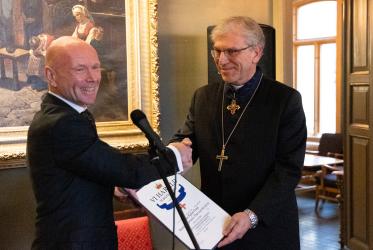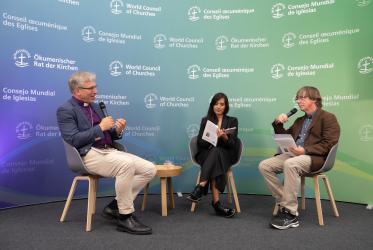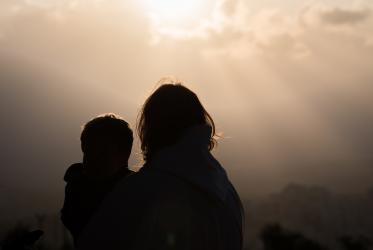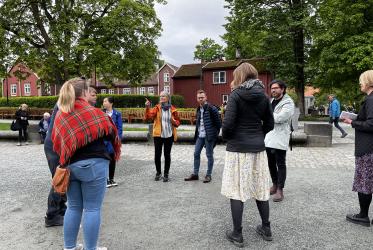Bonfires on the mountains and joyous celebrations along Norwegian coastlines herald the midsummer holiday known in recent centuries as Jonsok (John’s wake), Sankthansaften (St John’s eve or St Hans’s festival), or the eve of the feast-day of St John the Baptist.
This event on 23 June flourished before it acquired any of these names, prior to the advent of Christianity in northern Europe.The “fire festival” marked for pagan Scandinavians one of the longest days of the year and a dramatic turning in the lifecycle of the divine sun. Witches, trolls and forest sprites were said to roam the earth around the summer solstice, lit by the midnight sun, as fertility rituals were practiced with abandon.
Upon the arrival of Christian mission and cultural conquest, the northern custom was rededicated to commemorations associated with John the Baptist’s saint’s-day on 24 June. The daily reduction in sunlight through the coming summer and autumn months may have been associated with the Baptist’s prophetic admission, “He must increase, but I must decrease” (John 3:30).
In a similar transfer of mythic significance, midwinter rites were appropriated as part of Christmas Eve and the feast of the Nativity.
So the date of 23 June has lived in earth religion, then as a Christian holiday, and increasingly is seen as a secular and civil holiday in Norway and neighbouring nations.
An excursion into Norwegian folkways
On 23 June 2016, at the close of their second day of business in Trondheim, Norway, the 150 members and related participants in the Central Committee meeting of the World Council of Churches (WCC) gratefully accepted an invitation from the Norwegian churches’ host committee to take part in the holiday traditions.
Transported to the outskirts of Trondheim and the grounds of the Sverresborg Trøndelag Folk Museum, the international contingent climbed the slopes of Sverresborg. An ancient hill fort now in ruin, Sverresborg stood sentinel above the woodlands and waterways of the Vikings’ domain.
WCC visitors mingled with Norwegian families awaiting the ignition of a towering bonfire. Women and girls in the crowd wore crowns of late spring flowers atop their braided hair; intrepid young boys encountered parental admonitions for venturing too near the edge of ruined walls. As they waited for the flames, a traditional band played folk music, and members of the crowd began to sing familiar choruses and join in country dances.
One Central Committee member from the Eastern Orthodox tradition, the Very Rev. Archimandrite Jack Khalil of the University of Balamand in Lebanon, observed: “I admire so much this community gathering. It is proof of a strong community life when we see families dancing, singing, playing music. We do not see youth alone, or older people alone, but whole families celebrating together. This means the community is healthy. Music tells us about a society, and they are very happy today.”
At last fire officials lit the bonfire, poised between the ruined stone redoubt and a 19th-century red clapboard church of the Lutheran persuasion. Soon, bright flames shot upward and white smoke rose to the clouds above.
Every tribe and race
And the party continued. The Central Committee was welcomed into the museum cafeteria to dine on specialties of the region – remmegret, a sour cream porridge topped with butter, cinnamon and sugar, associated with holiday feasting, and dry cured meat and sausage.
Rev. Alex Benson Maulana, from the Church of Christ in Africa-Presbyterian, said over dinner, “This day reminds me of the fact that every race, every tribe, has a tradition. They may not be the same traditions, yet they have so much in common.”
“It is not something that goes with colour,” he continued. “We have our traditions, and our holidays that bring meaning into the course of our existence. Others have their traditions, too.” Glancing down at his bowl of remmegret, he added: “And so often a special meal is shared to make the celebration real.”
The fire and the Spirit
Visitors from churches in every geographical region wandered through the folk park, beneath a sun that would barely set that night.
“I never foresaw that I would visit Norway,” remarked Rev. Dr Angelique Walker Smith of the Bread for the World citizen’s lobby in Washington DC and the Pan-African Women’s Ecumenical Empowerment Network.
“And here we are – a bonfire, porridge, children dancing. Absolutely intriguing! Totally unexpected! I’m remaining open to the Spirit, open for the Lord to take us wherever we go!”
Also see:



![Image[1].jpeg](/sites/default/files/styles/teaser/public/photoshelterCopy/Image%5B1%5D.jpeg?h=44590859&itok=LMAXVRC6)


